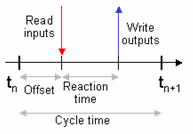Experiment Setup Definition
Properties and parameters define your virtual execution.
Virtual Execution Properties
By default, virtual execution properties are atemporal. Execution is immediate or with delay, outputs are synchronized with inputs (n or n-1).
You can also select the temporal mode, and define timed execution properties.
Multi-behavior Model
When a function/logical component contains several behaviors, you must select the behavior to be executed.
